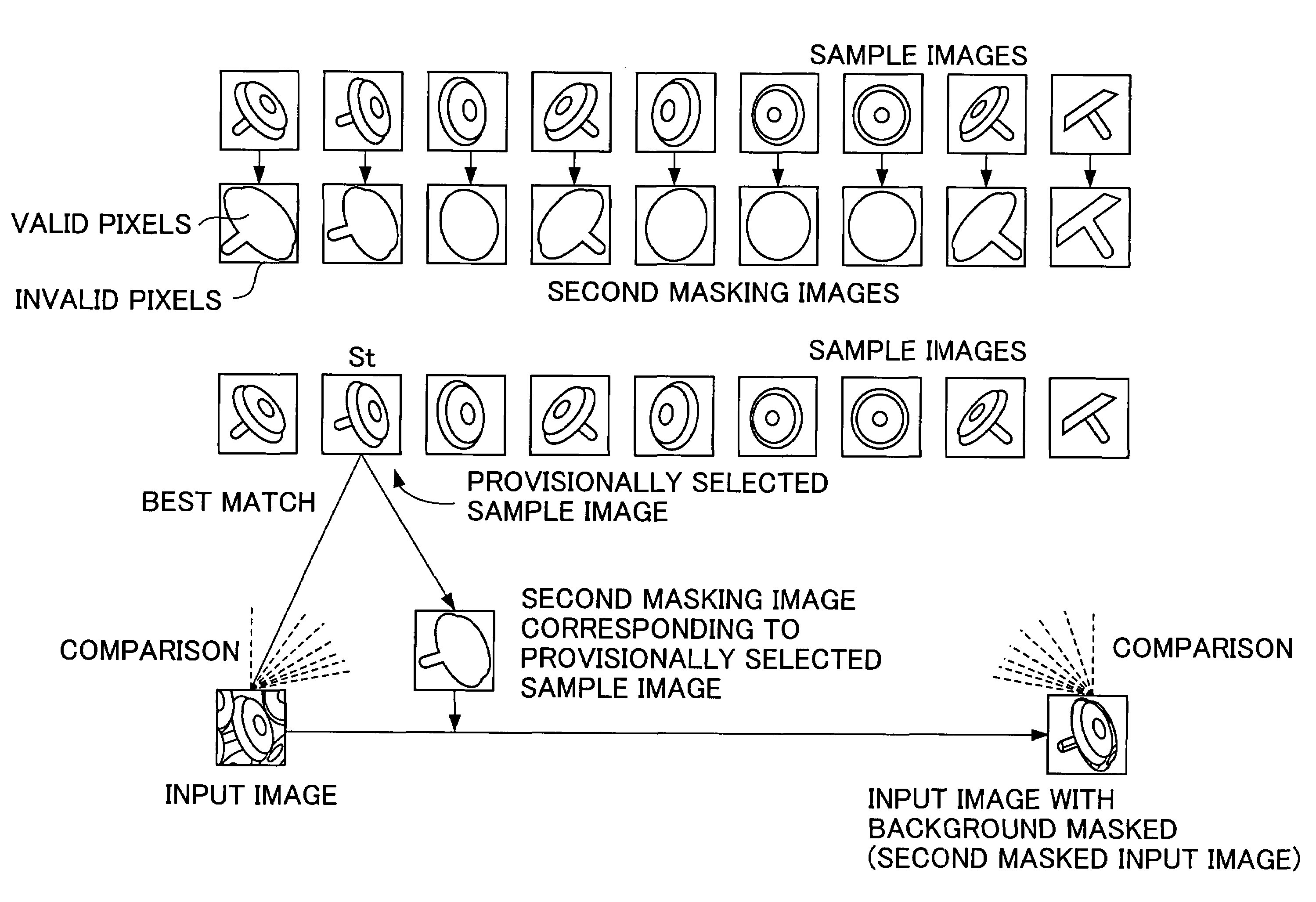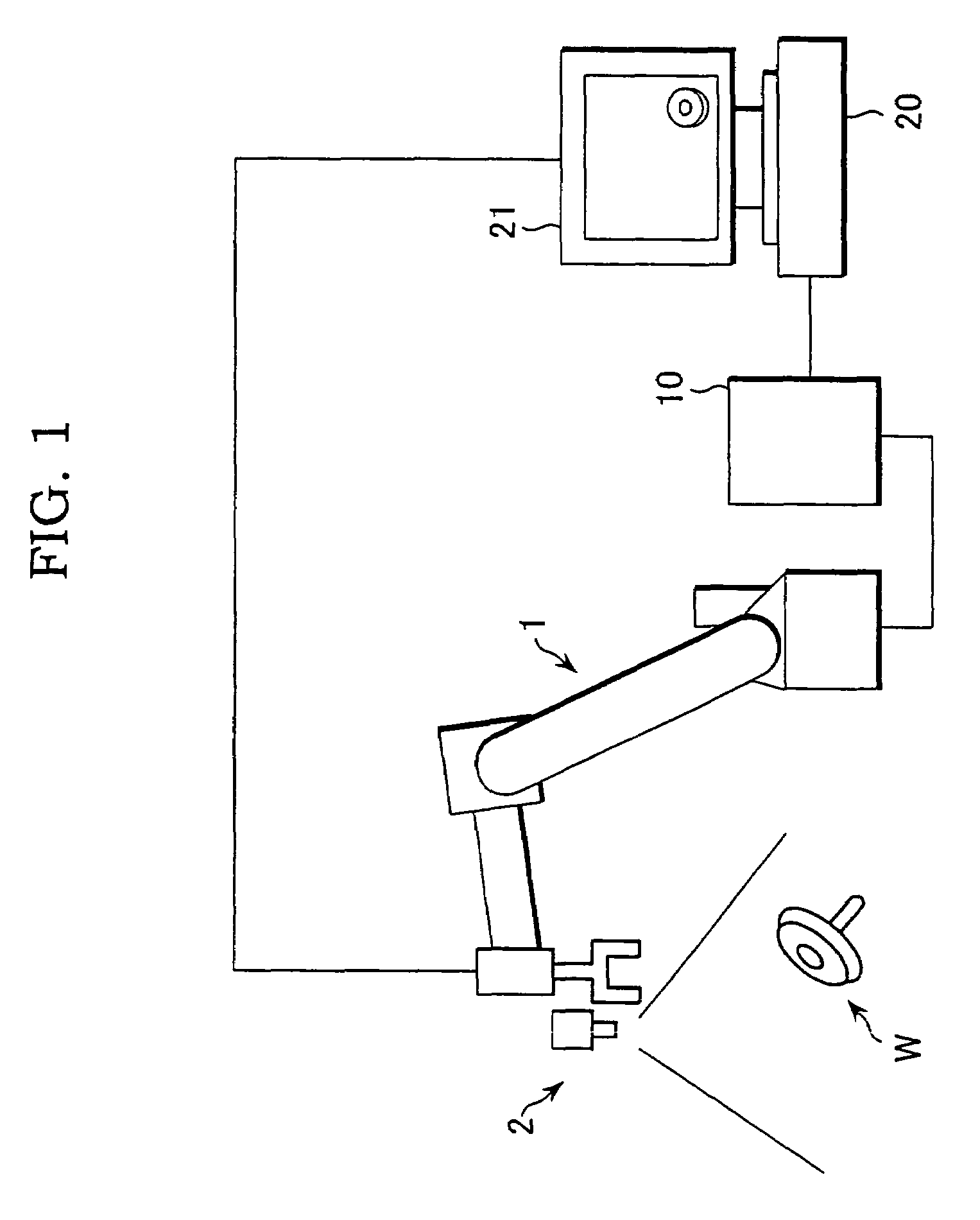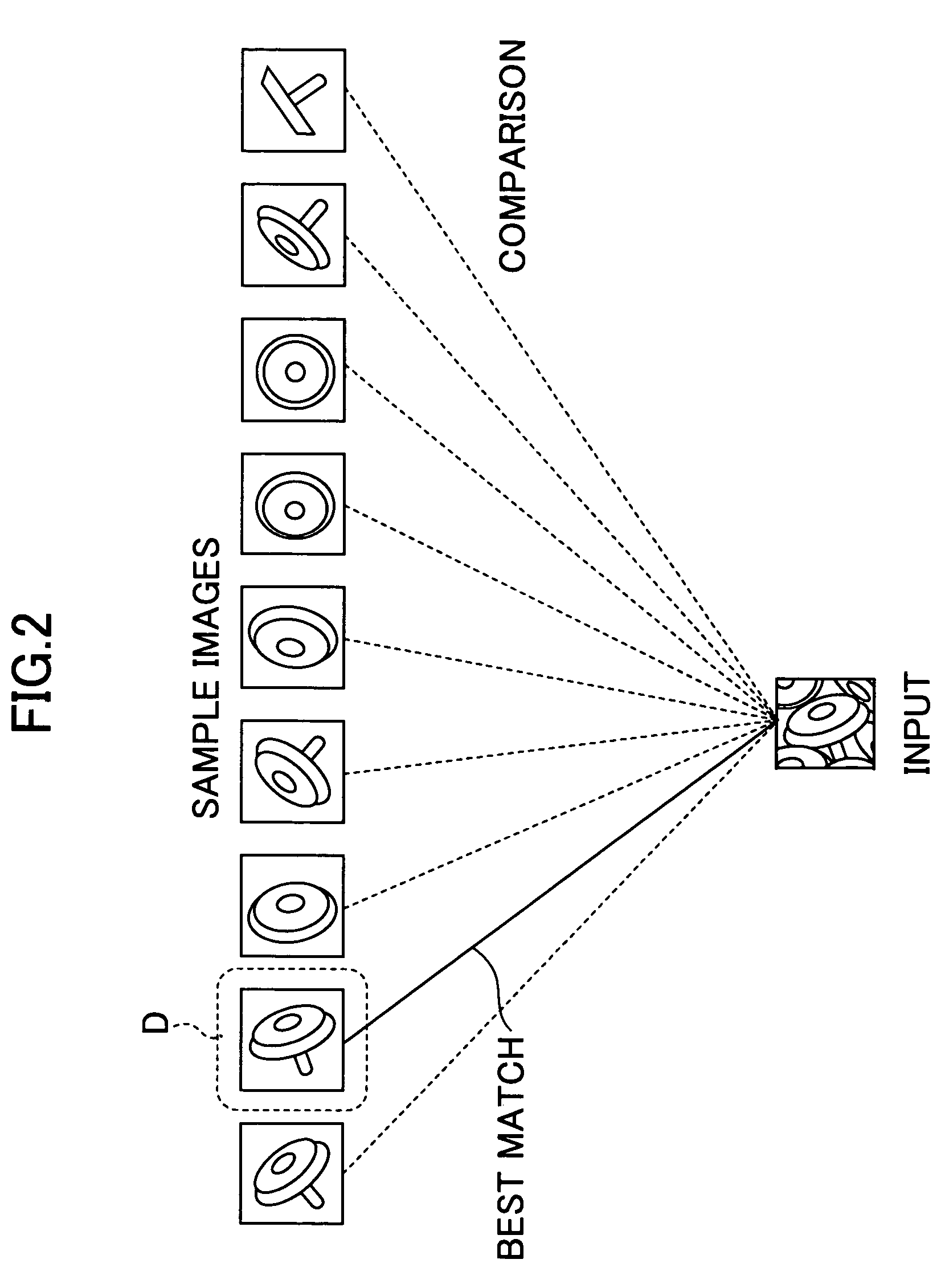Image processing apparatus
a technology of image processing and apparatus, applied in the field of image processing apparatus, can solve the problems of difficult orientation recognition, difficult orientation recognition, and high comparison accuracy, and achieve the effect of increasing comparison accuracy
- Summary
- Abstract
- Description
- Claims
- Application Information
AI Technical Summary
Benefits of technology
Problems solved by technology
Method used
Image
Examples
first embodiment
[0035]First, FIG. 3 illustrates an image comparison processing in the A first masking image is created before the input image is compared with each sample image. The first masking image is created by assuming that pixels in an area covering the area of a target in all sample images are valid pixels while pixels in the remaining area are invalid pixels. This processing can be explained more specifically as follows:
[0036]Pixels in all sample images and the input image will be represented in common as Aij (i=1, 2, 3, . . . m; j=1, 2, 3, . . . n; the total number of pixels is m×n), and the s-th sample image will be denoted Ss (s=1, 2, 3 . . . q; q is the total number of sample images). If a pixel Aij (i=1 to m, j=1 to n) is within an appropriate pixel area in which the target appears in at least one sample image Ss (s=1 to q), the image processing apparatus 20 determines pixel Aij as a valid pixel. Otherwise, pixel Aij becomes an invalid pixel, that is, if a pixel Aij is within an area...
second embodiment
[0040]Next, FIG. 4 illustrates an image comparison process in the In this embodiment, two-stage comparisons are made between the input image and each sample image. The first stage comparison is carried out using all pixels in each image, and the sample image providing the best match with the input image is chosen as a provisionally selected sample image St.
[0041]In the second stage comparison, a second masking image created from the provisionally selected sample image St is used. The second masking image is created according to a rule slightly different from the first masking image: the second masking image is created for individual sample image. In the description below, the second masking image is created from the provisionally selected sample image St. For the provisionally selected sample image St, therefore, it is assumed that pixels in an area including the target are valid pixels and pixels in the remaining area are invalid pixels. The processing in the embodiment is describ...
third embodiment
[0044]Finally, FIG. 5 illustrates the image comparison process in the In this embodiment, first and second masking images are created before the input image is compared with each sample image. The first masking image is created, as described above, by assuming that pixels in an area covering the area of a target in all sample images are valid pixels while pixels in the remaining area are invalid pixels. Further, a second masking image is created for each sample image by assuming that pixels in the area including the area of target are valid pixels while pixels in the remaining area are invalid pixels.
[0045]Comparisons between the input image and each sample image are carried out two times. In the first comparison, pixels corresponding to the valid pixels in the first masking image are used for comparison. With this comparison, an image providing the best match with the input image is chosen from among sample images as a provisionally selected sample image Su. The second comparison ...
PUM
 Login to View More
Login to View More Abstract
Description
Claims
Application Information
 Login to View More
Login to View More - R&D
- Intellectual Property
- Life Sciences
- Materials
- Tech Scout
- Unparalleled Data Quality
- Higher Quality Content
- 60% Fewer Hallucinations
Browse by: Latest US Patents, China's latest patents, Technical Efficacy Thesaurus, Application Domain, Technology Topic, Popular Technical Reports.
© 2025 PatSnap. All rights reserved.Legal|Privacy policy|Modern Slavery Act Transparency Statement|Sitemap|About US| Contact US: help@patsnap.com



